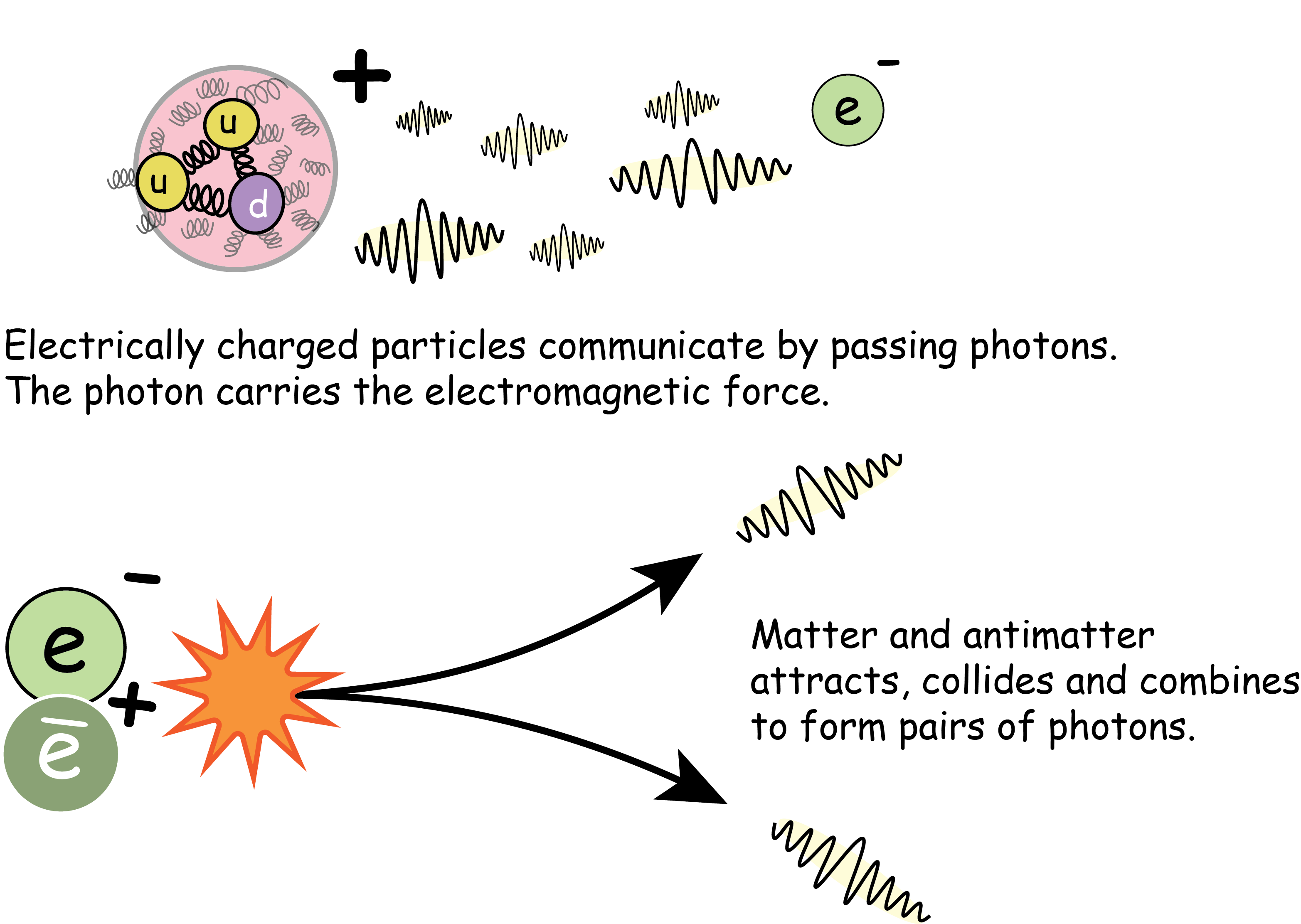
The Photon
Light is made up of particles: quirky, counterintuitive particles, but particles nonetheless. This fact was a surprise, and is still difficult to internalize, because light is also made up of electromagnetic waves.We call particles of light photons. Photons have no mass, but they do have energy. How could that be, if E=mc2? Well, Einstein’s most famous formula only holds for particles at rest, but photons are never, ever at rest. They're always moving. Worse, they're always moving at the speed of light.
Unlike the electron, the proton or other matter particles, the photon doesn’t abide by the exclusion principle, which is why so many are allowed to exist in the same configuration. Those collective configurations are something we would call a light wave, or an electric field, or even a magnetic field! If anything, it’s quite the opposite of the exclusion principle: photons prefer to hang out in groups.
Photons are the messenger particles that communicate the electromagnetic force. Electric charges exchange photons, like just like mobile phones. Photon exchange is the definition of electromagnetic force. Indeed, all the known forces of particle physics involve exchanging similar particles, and we’ll visit them all in turn.
Figure: Photon Exchange

The photon is a particle that communciates the electromagnetic force. Individual particles exchange photons to impose a force upon the other.
The details of photon exchange can be intense, mathematically, but we see it all time. Literally, as it turns out, for many of us. That’s how our eyes work. They absorb photons.
Atoms and molecules exchange energy by emitting and absorbing photons. That's the basic job of the electron cloud. Different atoms and molecules absorb light in different colors, very specific colors, across the whole spectrum of light.
So here’s the fun part: If you look carefully at light emitted by some object. If you break it apart in a prism say and count all the photons of all the different colors, you can tell what more or less tell what elements that object is made of. It's complicated, sure, but it's just like accounting, only with photons.
So when astronomers look to the sky and see stars or interstellar gas, they can look at the different colors of the light and tell exactly what elements those stars are made of. The accounting works, and it's quite comforting to know that the laws of physics here on Earth also hold in outer space.